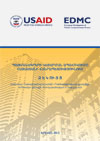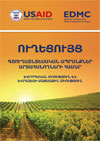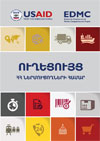ORGANIC/FAIRWILD CERTIFICATION
Organic/Fairwild Certification is the procedure for verifying that the products conform to certain standards. In case of Organic/Fairwild Products, it is primarily the acknowledgment that the products have been produced according to the applicable Organic Standards. Basically all the major organic markets of the world like
Lab test report for all the items we sale for % of organic content is to be made available. A food labeled 100% Organic/Fairwild means that 100% of the substances, ingredients, processing aids, food additives are certified organic. Most often these foods are fresh certified organic fruits and vegetables, or products with very few ingredients (all of which are certified organic/Fairwild) Organic means that 95-100% of the ingredients are organic. All Horizon Organic products are labeled this way. Only food items with either of the above terms can use the ORGANIC seal. Food labeled Made with Organic Ingredients contain 70-94% organic ingredients, and cannot use the ORGANIC seal
Benefit of Organic/Fairwild Certification
Organic/Fairwild certification helps in building trust between consumers and Organic/Fairwild farmers. The certification mark 'Organic/Fairwild' is the only means to differentiate between certified Organic/Fairwild and conventional foods. Labels and certification marks help a consumer to recognize trust worthy Organic/Fairwild products easily. Organic/Fairwild certification and the logo are important marketing tools. Organic/Fairwild certification helps in getting comparatively a better price.
How to get Organic/Fairwild Certification
Farming
Improving the quality of the soil is the basis for organic. The farm’s soil must be free of prohibited substances for a minimum of three years prior to harvesting crops that will be labelled as organic. The National Organic Program (NOP) encourages farmers to improve soil fertility and rotate crops to naturally increase crop yields and disease resistance.
Harvesting
Organic crops are picked, cut, and cleaned in the field. To ensure organic integrity, certifying these operations is necessary. Equipment used for harvesting and processing must be cleaned and sanitized in accordance with NOP requirements.
Packaging
Packaging may occur in the field, at a facility or where a product is cleaned, canned or bagged, and given a product label, name or an identification number such as a UPC code. Organic products are verified to make sure organic integrity has been maintained through the packaging process.
Processing
Organic crops can be processed further with other organic crops or spices. To ensure the organic integrity of a product has been maintained, a USDA-accredited certifying agent, such as CERTIFICATION BODY, must inspect these operations to ensure that they are operating according to the NOP and certify their compliance.
Labeling
Labeling is a very important and complex part of the NOP. How agricultural products have been handled, processed, and combined with other ingredients determines how it can be labeled organic. 100% Organic = 100% organic ingredients and processing aids Organic = At least 95% organically produced ingredients, with the remaining % from the National List of allowed ingredients Made with Organic Ingredients = Minimum of 70% organic content with the remaining % of allowed ingredients
Shipping
Products are shipped to distributors or to retail stores. To ensure the continued organic integrity, products must be protected from contamination by non-organic products. Prior to loading and unloading, trucks are verified for shipping practices that maintain this integrity, such as the prevention of commingling of organic and nonorganic products and impermeable packaging.
Distribution
Products are compiled from farms, processors, or other distributors to one central location in order to distribute products. If organic product is repackaged, perhaps to smaller sizes, CERTIFICATION BODY would confirm that organic integrity has been maintained.
Transportation
Similar to shipping, special accommodations must be in place to protect organic products from contamination. Retail Consumers can look for the USDA’s organic seal and a certifier’s mark, such as CERTIFICATION BODY’s mark, to ensure that each step in the entire organic supply chain meets the NOP guidelines.
What we offer in the field of organic standard and certification
We provide unmatched expertise and technical competence to ensure that your Organic/Fairwild certification project adds value to your organization.
We provide consulting, training, internal audits, pre assessment audits and facilitation during Organic/Fairwild certification audit.
We offer our global knowledge moulded locally to bring in the best results for our clients and partner their journey of standardization, compliance, growth, success and continual improvements.
Contact us now, to get your organization organic certified in the most effective and efficient manner while realizing the true benefits of the certification using our specialized organic/Fairwild certification implementation methodology that is less time consuming, fast, easy to understand and implement, result oriented, time bound and cost effective. Get Organic/Fairwild certified now with us…








